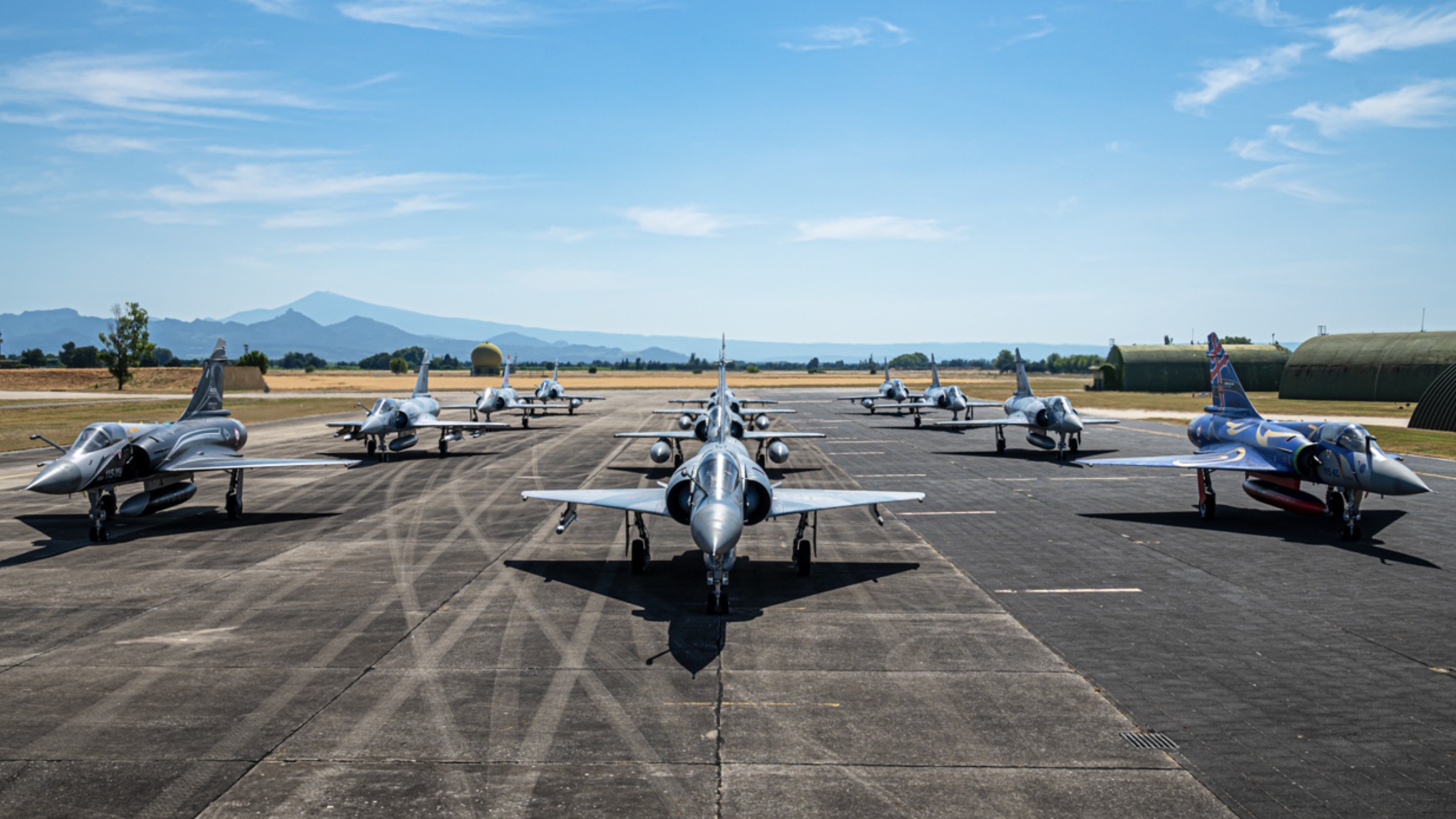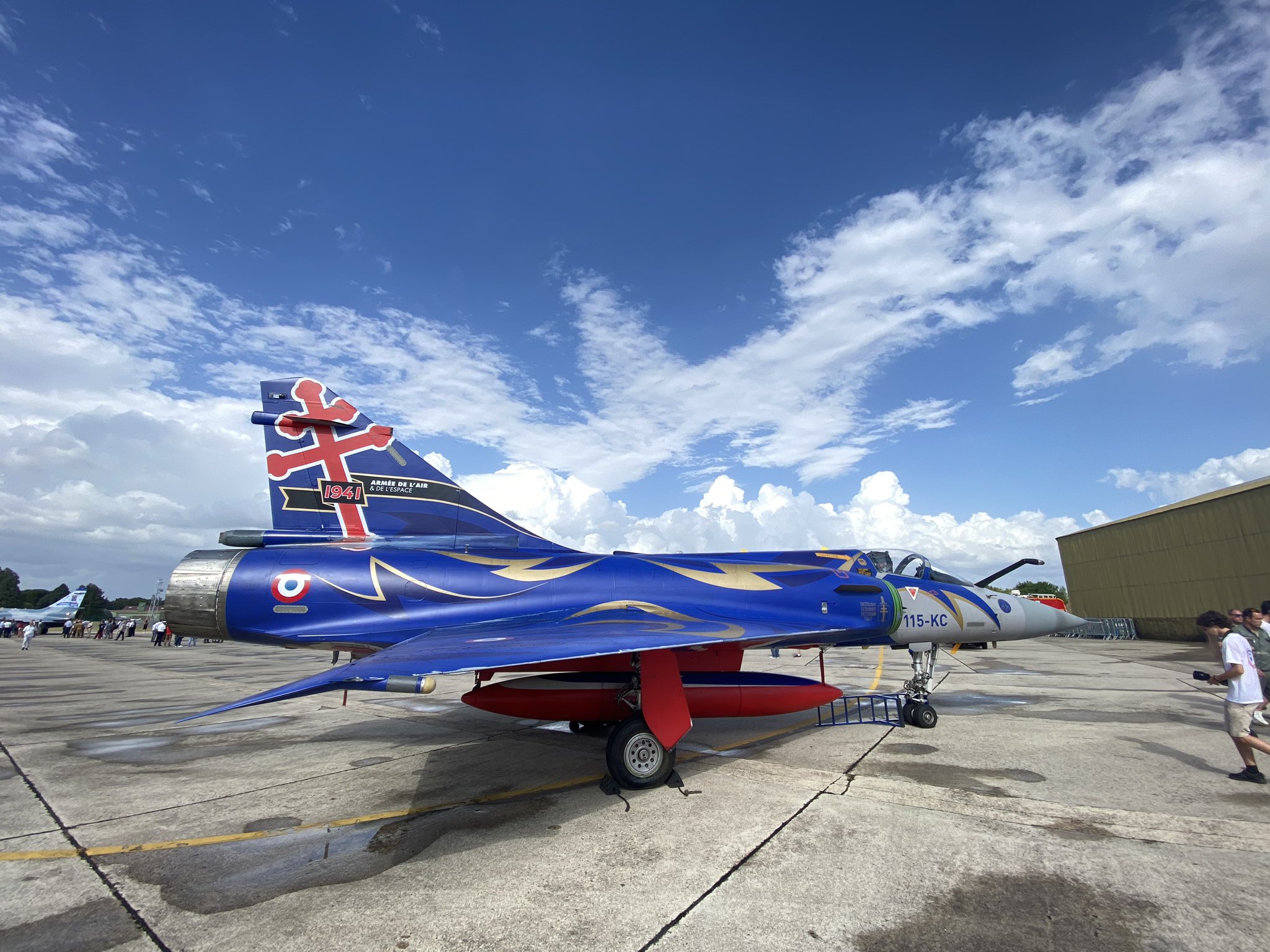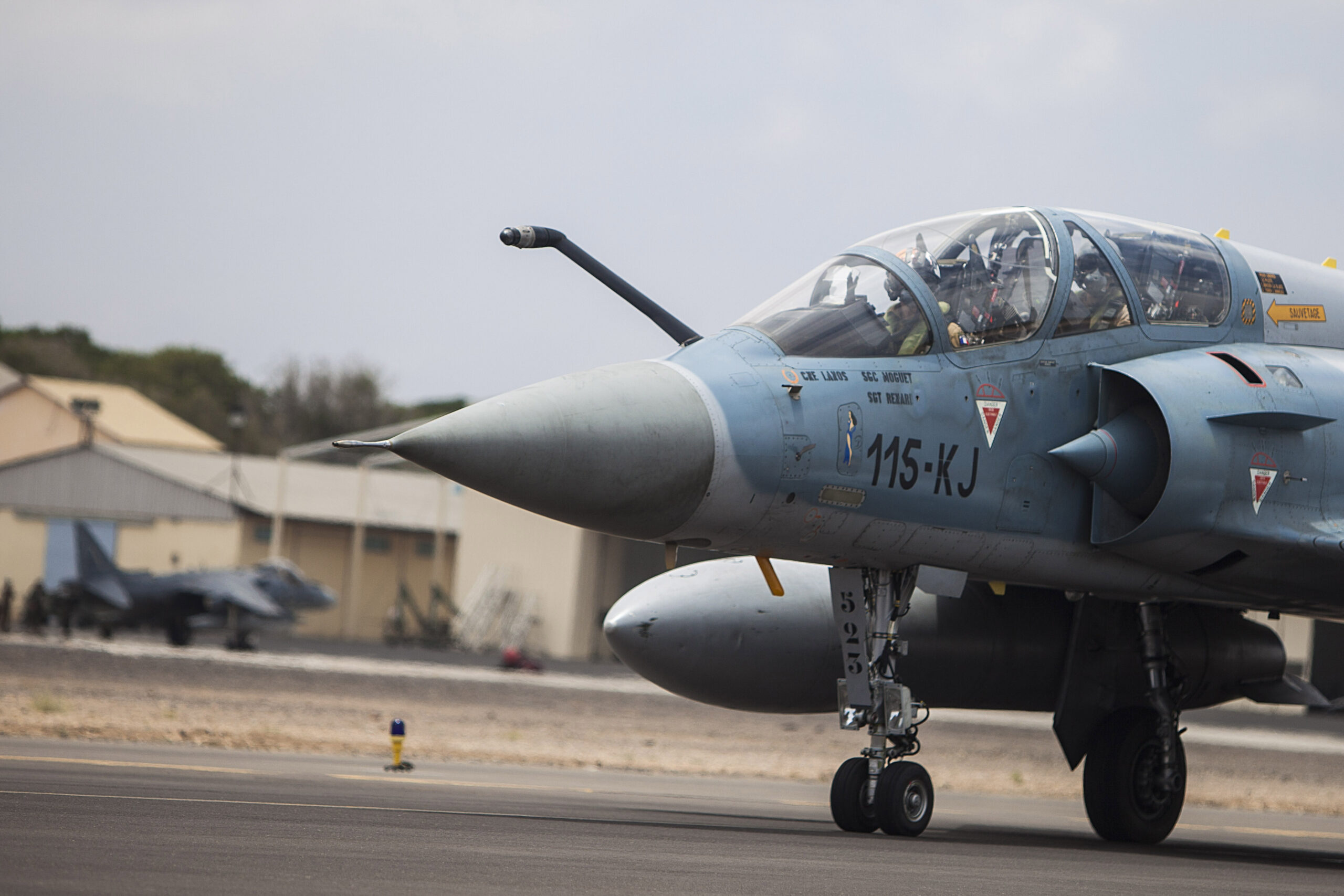The retirement of a different 1980s-era fighter jet seems to be an increasingly regular occurrence, with the latest to bow out being the French Air and Space Force’s charismatic, delta-winged Mirage 2000C. Held in the highest regard by the many pilots who flew it, the Mirage 2000C has officially ended its service with the final squadron in France, as the air arm moves toward a fighter fleet dominated by the more modern and versatile Rafale.
Today saw the official disbandment of Escadron de Chasse 2/5, or EC 2/5, known as “Ile de France,” the last frontline operator of the original Mirage 2000C, which entered service, primarily as an air defense fighter, back in 1983. The move also temporarily ended the traditions of the historic squadron, which has served the French military for more than 80 years, beginning by fighting with the Free French against the Nazis in World War II. However, the unit is set to return in 2024 with Rafales.
To mark the demise of the Mirage 2000C, EC 2/5 had one of its jets painted in a special retirement scheme in black and silver, with “Mission Accomplished” titles on the trailing edges of the classic delta wing. This, together with another specially liveried jet marking the unit’s 80th anniversary last year, was part of an ‘elephant walk’ on the runway at the squadron’s Orange-Caritat base, in the south of France, earlier this month.

EC 2/5 had been preparing to bid farewell to the Mirage 2000C for some time, as part of French Air and Space Force restructuring plans, and within the last year had cut back its activities by half, flying around 20 sorties per week in the final months. These were handed by a reduced force of 11 single-seat Mirage 2000Cs plus seven of the two-seat Mirage 2000B combat training versions.
Most of that flying was dedicated to training more pilots since the more modern and capable Mirage 2000-5F air defense fighter remains in service. Also schooled by the squadron were aircrew headed to the related Mirage 2000D conventionally armed strike aircraft. Of the approximately 20 pilots assigned to EC 2/5 in its last months, 15 were qualified as instructors.
Alongside training activities, which included some red air aggressor work, the “Ile de France” jets also carried out missions as part of France’s air defense network, with an around-the-clock quick reaction alert (QRA) role until the end. The last such sortie, to defend France’s southeastern airspace, took place on June 9.


For the air defense mission, the squadron’s last Mirage 2000C were each armed only with a pair of 1980s-era Magic II short-range heat-seeking air-to-air missiles and the fighter’s two internal 30mm cannons. The old radar-guided Super 530D missile was retired back in 2012, leaving the Mirage 2000C at a distinct disadvantage compared with most other modern fighters.

When the Mirage 2000C first appeared in service with the then French Air Force, it was among the most capable fighters in Europe, with features that were then cutting edge, such as a fly-by-wire (FBW) control system coupled with an aerodynamic configuration that optimized a high level of agility and exceptional handling. It’s worth noting that being armed with a radar-guided missile also put the Mirage 2000C in an exclusive club at that time, with European F-16s, for example, only receiving the AMRAAM a good deal later. Fully-internal electronic warfare systems were also a novelty.
The first series-production Mirage 2000Cs were delivered to the French Air Force in 1983 and entered operational service in the following year. In all, 124 single-seat Mirage 2000Cs were produced for France, together with 30 two-seat Mirage 2000Bs. In its heyday, nine different squadrons operated Mirage 2000Cs across three French airbases.

Reflecting the pace of technological change in the 1980s, the Mirage 2000Cs were progressively improved while production continued. The first 37 aircraft were fitted with an interim M53-5 engine developing around 19,800 pounds of thrust and had the problematic RDM radar that was eventually integrated with the Super 530F missile with semi-active radar homing.
Later aircraft featured a more powerful M53-P2 engine producing around 21,400 pounds of thrust and switched to the RDI radar associated with the improved, longer-range Super 530D missile. This allowed the engagement of aerial targets flying as low as 50 feet. Meanwhile, the pilot could employ a snap-up maneuver at 40,000 feet, pulling into a fast climb and releasing a missile to hit a target as high as 80,000 feet. Radar range was reportedly around 56 miles while in look-down/shoot-down mode but only one target could be engaged at a time.

As a secondary role, the Mirage 2000C could also fly ground-attack missions, initially with unguided 500-pound bombs and later adding laser-guided GBU-12 Paveway II weapons of the same weight.
Once the Super 530D ran out of shelf life and was withdrawn, it was left to the much-improved Mirage 2000-5F to fly the flag for the air defense Mirage. These jets were produced via conversion of 37 Mirage 2000Cs and are far more capable, with the MICA air-to-air missile in active-radar and infrared versions, as well as multifunction cockpit displays, radar upgrades, and other improvements.
In the meantime, more modest upgrades were made to the Mirage 2000Cs, including improvements to the RDI radar, and M53-P2 engines as standard, together with the Spirale integrated self-protection suite. More recently, the jets received a non-cooperative target recognition (NCTR) capability that uses the radar to identify and classify the unique signature of the targeted aircraft, while pilots were issued with night-vision goggles.

The Mirage 2000C made its combat debut in Operation Desert Shield and Desert Storm in 1990-91, logging combat air patrols over Saudi Arabia before flying escort missions for strike and reconnaissance packages over Kuwait and southern Iraq.
Subsequent combat deployments took the Mirage 2000Cs back to the Persian Gulf in support of the no-fly zone established under Operation Southern Watch before the crisis in the Balkans saw the fighters take part in Operation Deny Flight. The air policing missions over Bosnia Herzegovina included the Mirage 2000Cs dropping unguided bombs for the first time in anger, alongside their combat air patrols.

Elsewhere in Europe, Mirage 2000Cs deployed to Lithuania on three separate occasions to conduct NATO’s Baltic Air Policing mission in the region.

Although less comprehensively equipped for close air support missions compared to the Mirage 2000D, let alone the Rafale, the Mirage 2000C was also used in support of French military operations in Africa’s Sahel region. Flying from Niger under Operation Barkhane, Mirage 2000Cs used GBU-12s and strafing to attack Islamist terrorist groups in the region, as well as flying air defense sorties. In its offensive missions, the Mirage 2000C was always limited by its lack of targeting pod, a significant drawback compared to most Western fighter jets and drones. This meant that the GBU-12 had to be cued onto the target by another manned aircraft, a ground unit, or a drone.


Other missions outside of mainland France included detachments in French Guiana, where the Mirage 2000Cs helped ensure a no-fly zone around the local space center during space launches.
Without the wide-ranging upgrades found in the Mirage 2000-5F and with a much more limited offensive capability compared with the two-seat Mirage 2000D that’s dedicated to air-to-ground missions, the Mirage 2000C, was, by the end, increasingly obsolescent. At the same time, the gradual introduction of the Rafale, with its own spiraled upgrades, meant it was time to retire the Mirage 2000C.
The two-seat Mirage 2000Bs that flew alongside the Mirage 2000C with EC 2/5 will be kept in service, transferring to the Mirage 2000D base at Nancy, where they will continue to convert crews onto these jets and onto the Mirage 2000-5F.

As for the Mirage 2000Cs, it seems the French Air and Space Force has no use for them, although they could be an attractive proposition for a contractor adversary air provider looking for a radar-equipped Mach-2-capable jet. That, however, will depend somewhat on the airframe life left on these hard-worked jets. One French red air contractor, ARES, has already acquired surplus Mirage 2000s — reportedly from Qatar — with the aim of providing 12 examples for adversary training to the French military. Another French firm, Procor, has secured some of the dozen Mirage 2000s that were formerly operated by Brazil, plus more from French stocks, and has similar ambitions.
One would imagine that donating them to Ukraine would be top of mind, as we have pointed out before, but there is more to standing up Mirage 2000C operations in the war-torn country than simply donating the hardware.

In the meantime, despite the formal retirement, the Mirage 2000Cs will continue to make periodic ferry flights taking them into storage. That routine will be broken, however, on July 14, Bastille Day, when three of the jets are scheduled to take part in a flypast over Paris as part of the annual military parade.
Whatever the fate of the last French Mirage 2000Cs, the jet will, without doubt, be fondly remembered by those that flew and fought in them, and those that supported them across a career that spanned almost four decades.
Contact the author: thomas@thedrive.com
